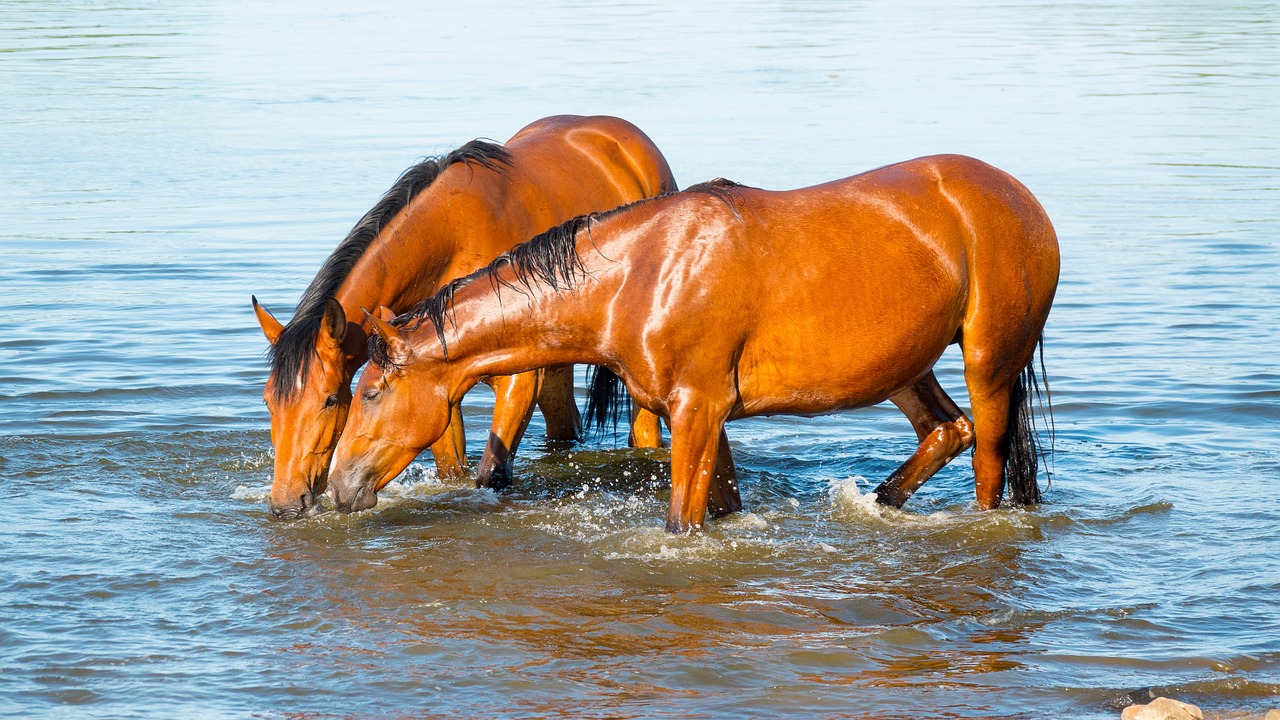Water is the most vital nutrient in a horse's diet. It is required for every physiological process, from digestion to temperature regulation. While horses can survive without food for days, a lack of water for just 48 hours can lead to health risks, including dehydration, kidney failure, and even death. Keeping your horse hydrated ensures performance, supports digestion, and keeps joints lubricated.
This blog explores the importance of hydration for horses and offers practical tips to maintain optimal water intake, ensuring your horse stays healthy and active.
Hydration For Horses: Why Is It Essential?
Proper hydration is a fundamental requirement for maintaining the health and well-being of horses, including their metabolic functions and physical performance. For horse keepers, understanding hydration needs is hence essential to prevent dehydration, a condition which can potentially lead to serious health complications, including colic, renal failure, and in severe instances, can even cause death.
A typical horse drinks between 5 and 15 gallons (19–55 liters) of water per day, but this can increase during summer when the temperature is higher and also depending on the intensity of physical activity. In addition, lactating mares and horses engaged in heavy exercise may need even higher amounts of water to replace fluids lost from their bodies.
Managing Hydration for Horses
Managing horses' hydration needs is not complicated but essential. The following action points will ensure their drinking water needs and hydration status.
-
Provide Continuous Access to Clean Water
Horses need access to fresh, uncontaminated water at all times. Clean buckets and troughs regularly to avoid algae buildup and prevent bacterial contamination. Horses drink more when water is clean and palatable. Stop every 2–4 hours during transport or travel to allow horses to hydrate.
-
Incorporate Electrolytes
Performance horses or those exercising intensely lose significant amounts of electrolytes through sweat. Supplementing their water with electrolytes, including sodium, potassium, and chloride, replenishes essential minerals and encourages the horse to drink more. Electrolytes are also critical for muscle contraction and maintaining nerve function.
-
Use Wet Feeds
Soaking hay or beet pulp is a great way to add moisture to the diet and improve hydration. Horses consuming wet feeds naturally increase their water intake, which helps maintain fluid balance, especially during summer or heavy work periods.
-
Monitor Water Intake Regularly
Track your horse's water consumption to detect early signs of dehydration. A typical horse drinks 5 -15 gallons (19–55 liters) of water daily, with higher intake needed during hot weather, lactation, or intense activity. Reduced water consumption can quickly escalate into dehydration if unnoticed.
Feeding Forage to Promote Hydration in Horses
Feeding forage helps maintain hydration in horses by influencing their water intake and supporting overall fluid balance. A well-planned forage diet helps horses stay healthy, hydrated, and perform at their best. Below are ways forage contributes to hydration:
-
Moisture Content of Forage
Fresh forage, such as pasture grass, contains a high moisture content, helping horses meet a portion of their daily water needs. Even though hay is drier, retaining approximately 10% moisture, it also adds to overall hydration. Grazing on lush pasture ensures horses benefit from direct moisture intake and food.
-
Stimulating Thirst
Chewing forage encourages saliva production, which aids digestion and helps maintain fluid levels. Horses can produce up to 10 gallons (35 liters) of saliva daily by chewing fibrous forage like hay and grass. This not only assists in breaking down food but also stimulates thirst, prompting horses to drink more water and stay hydrated.
-
Digestive Health Support
Forage is essential for maintaining a healthy digestive system. It provides fiber that helps the gut function efficiently by absorbing and retaining water. This promotes better nutrient absorption and ensures balanced hydration, especially in hot weather or during exercise when fluid loss is higher.
-
Preventing Impaction Colic
The fiber in forage keeps the gastrointestinal tract functioning smoothly, reducing the risk of impaction colic—a severe condition caused by dry, compacted feed blocking the intestines. A fiber-rich diet encourages water consumption, reducing the likelihood of digestive blockages and dehydration.
-
Balancing Electrolytes
Fiber fermentation in the horse’s hindgut produces volatile fatty acids—essential energy sources for horses. The body needs a balance of electrolytes and fluids to metabolize these effectively. A forage-rich diet promotes water intake, helping horses manage their electrolyte levels and avoid imbalances that could lead to dehydration.
Signs of Dehydration in Horses
The chances of dehydration in any horse are more likely when they start losing more bodily fluids, which may happen especially when they are on long rides on hot, humid days and when the horse fails to meet the hydration demands. Some of the easily identifiable signs of dehydration in horses are mentioned below:
-
Elasticity of Skin:
Dehydration changes several areas but is quickly and visibly seen through the skin. A dehydrated horse will have elastic skin due to the loss of water from the skin. Pinch the skin on the neck; if it takes more than five seconds to snap back, the horse may be dehydrated.
-
Stiffness:
A hydrated horse is very flexible during exercise. If the horse is stiff when stretching, it could also indicate dehydration. Regularly stretching the horse can help one understand how adaptable it is. If changes like stiffness are noticed while stretching, it could be due to dehydration.
-
Capillary Refill Time:
A hydrated equine will have pink and moist gums. When the thumb is placed on the horse’s upper gum for a second, the pressure point will turn white but return to a light pink color within a second. If it takes longer, it’s a sign that the horse may be dehydrated. If the gums are red, it could be a sign of endotoxemia, a condition requiring immediate attention from the Vet.
-
Weariness:
A hydrated horse is active, lively, and focused on each task. If the horse loses concentration on any task and appears tired, it could be a sign of dehydration.
-
Mucous Membrane:
The inside of the horse’s upper lip should feel moist with saliva and shiny. Colors such as white or purple on the mucous membrane may indicate dehydration. Dry mucous membrane may be a sign of dehydration.
-
Reduced urine output or darker urine:
Dark urine or a decrease in urination frequency is a sign of dehydration.
The Role of Nutrition in Preventing Dehydration
-
Balanced Forage Intake: Forage-rich diets maintain gut health and prevent colic by ensuring smooth digestion. Fresh pasture offers moisture, while even dry hay contributes to hydration.
-
Supplementing with Horse Mineral Supplements: Proper hydration and mineral balance go hand in hand. Adding electrolyte support will to recover lost electrolytes and encourage water consumption.
Final Words:
Proper hydration is essential for horses' health, performance, and overall well-being. Providing access to fresh water, monitoring fluid intake, and offering forage-rich diets ensure optimal hydration and prevent conditions like colic or electrolyte imbalances. Wet feeds, electrolytes, and careful hydration management can also help ensure that horses remain in a healthy condition and ready to perform their best.
Explore Med-Vet Pharmaceuticals's range of trusted solutions to keep your horse hydrated, healthy, and ready for every ride. VisitMed-Vet Pharma today or contact us at 833-809-4848.

